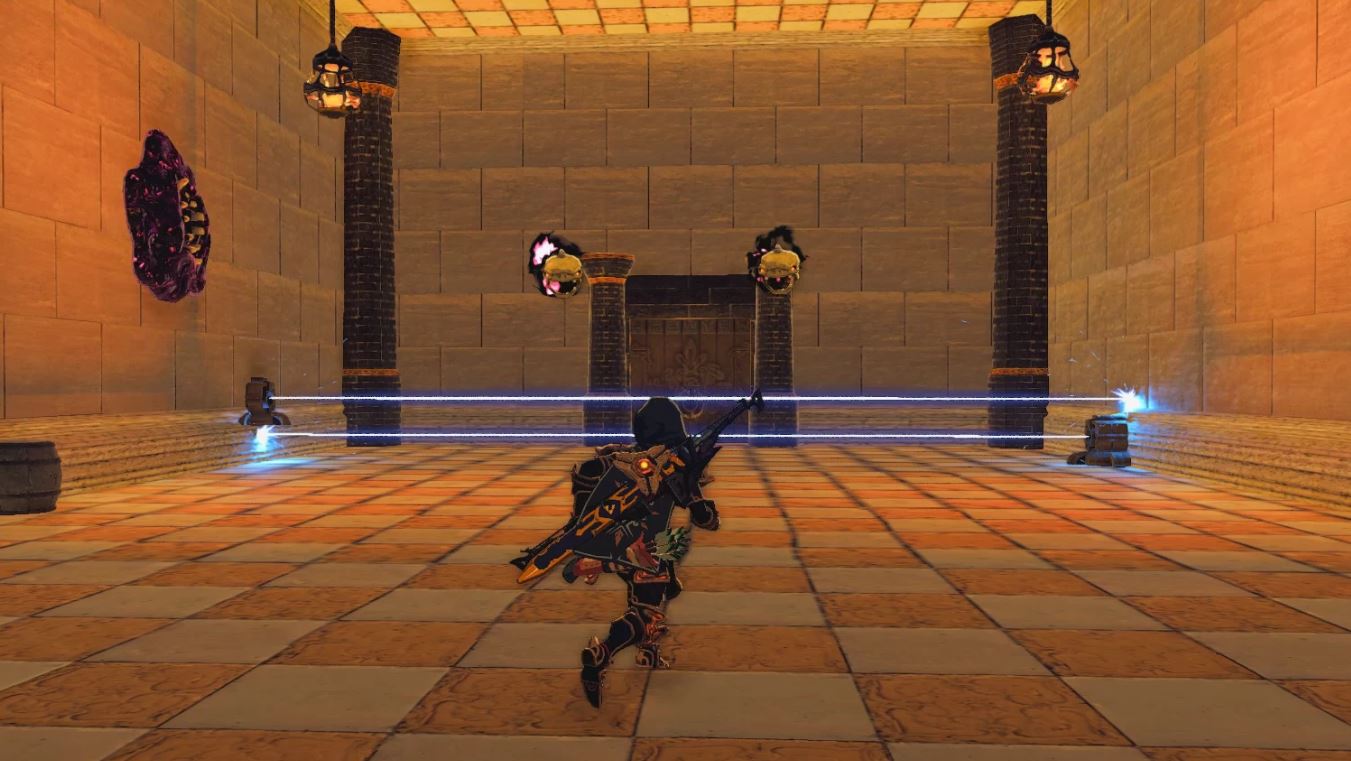How a modder cracked open Zelda: Breath of the Wild to build new custom dungeons
After crossing some big hurdles, modders are moving towards replacing BotW's shrines with traditional Zelda dungeons.
The Breath of the Wild modding community has been hard at work since it launched in 2017. Modders began with simpler tasks like changing the color of Link's tunic, moved on to swapping out 3D models by inserting GTA's CJ, and plenty of other wonderfully weird stuff. Now, they've taken on the biggest task yet: Building their own dungeons.
Shrines, Breath of the Wild's mini dungeons, are separate from the game's overworld, accessible through entrances hidden across Hyrule's landscape. Replacing those locations with custom-built ones is plenty more complex than changing Link's wardrobe, but modders are starting to figure it out. It's taken the two years since launch to arrive at these first few successful custom maps, with a lot of room still to grow and improve.
Tools of thumb
HailtoDodongo filled the Sky Maze with a number of puzzles that he feels are part of the quintessential Zelda dungeon experience
"My goal is to get the feeling of old, bigger Zelda dungeons," says Breath of the Wild modder HailtoDodongo. He created the tool set that allowed him to build the first custom shrine mod for Breath of the Wild playable on the Cemu emulator for PC, which he put online in late May. Ancient Cave was HailtoDodongo's first shrine, and while it's not pretty, it proved deep shrine modding was really possible. Shortly after he released the more ambitious Sky Maze, which is now followed by new shrines by other modders.
There are three components needed to successfully build a custom shrine for Breath of the Wild, HailtoDodongo explains: Creating a 3D model of the environment itself, collision data for the environment (so that Link can stand on floors and not walk through walls), and placing objects like enemies and switches inside the environment.
"Nintendo really likes recycling old file formats, so most of them were pretty well known from games like Wind Waker or Mario Kart Wii," HailtoDodongo says. Adding a 3D model for a homebrew dungeon was easy enough, as was placing moblins and decorations inside of it. They weren't convenient to edit, requiring a lot of manual entry of coordinates into text files, but creating something that looked like a dungeon wasn't so hard to achieve. The difficult part was making it work like one, by getting the elusive collision data created.
Nintendo tripped modders up by using a third-party tool called Havok for its physics engine. You may not be familiar with Havok, but if you search its name, you'll immediately recognize its logo. You've seen it on splash screens prior to loading all sorts of games. Modders are familiar with Havok, but in this case it proved to be a curveball. Despite seeing Havok in heavily-modded games like Skyrim, HailtoDodongo says that the files themselves seem to be different between games. They had to throw out what they knew about altering collision data from previous Nintendo games, and the immense pool of knowledge from modding Skyrim was useless, too.
The whole shrine yards
HailtoDodongo started working to reverse-engineer the file formats modders needed: "After many frustrating weeks, I got to a point where I could create collision files specifically for the shrine/overworld."
The biggest gaming news, reviews and hardware deals
Keep up to date with the most important stories and the best deals, as picked by the PC Gamer team.
After that, creating custom shrines was possible, but modders were stuck with manually editing a number of files to achieve results. "The hard part wasn't editing the files itself, but rather getting a lot of parts from the game together to make it easy to use," he says. Then HailtoDodongo took it a step further, creating a visual editor for custom shrine maps.

Finishing his visual editor "Ice-Spear" wasn't the breakthrough that made shrine editing possible, but it's almost certainly what will make it feasible. Combined with Ice-Hail, which simplifies creating that Havok collision data, shrine modding gets a whole lot more approachable.
HailtoDodongo's Ancient Cave video was his first attempt at going beyond a tech demo video for Ice-Spear to actually show off the possibilities for custom dungeons. The Ancient Cave has plenty of things that seem dungeon-y: a giant lavafall, switches that activate hidden walls, and a boss fight against a Lynel. HailtoDodongo's goal was just to prove that it all works. The Ancient Cave, which replaces the bomb shrine (Ja Baji Shrine) on Hyrule Plateau, has an entrance from the overworld, an objective to complete inside, and an exit.
HailtoDodongo's second custom shrine, the Sky Maze, was created to look like it might actually belong in a Zelda game. He invested more effort into the design of the Sky Maze, giving it a shiny white exterior full of trees and very Zelda-esque interiors lit by torches. At the end, another boss fight awaits, this time one of Breath of the Wild's actual bosses: Fireblight Gannon.
HailtoDodongo filled the Sky Maze with a number of puzzles (partly, he says, to show off how modding events like switches and moving platforms work) that he feels are part of the quintessential Zelda dungeon experience. "I really like puzzles where it's not just pressing a simple button and it's solved but rather one where it's hidden, you need to time it, be in a different location before activating, collecting things beforehand and so on."
HailtoDodongo also calls out the work of others that made his mods possible: a user named KillzXGaming who built a 3D model viewing tool, and Leoetlino, who spearheaded reverse-engineering Breath of the Wild to begin with, a reminder that modding games is almost always the work of a village and never one lone cowboy.
For the future, HailtoDodongo is juggling making his own shrine mods and supporting others using Ice-Spear. And developing new tools. Any number of things may be next: Researching how to implement custom enemies and bosses, or even beginning to change parts of the overworld map.
The Breath of the Wild modding community has finally reached a point similar to the opening moments of the game itself. Like Link emerging from 100 years in cryo-sleep, they've now walked out into the sunlight, blinking down below at all of the places they might explore next.

Lauren has been writing for PC Gamer since she went hunting for the cryptid Dark Souls fashion police in 2017. She accepted her role as Associate Editor in 2021, now serving as self-appointed chief cozy games and farmlife sim enjoyer. Her career originally began in game development and she remains fascinated by how games tick in the modding and speedrunning scenes. She likes long fantasy books, longer RPGs, can't stop playing co-op survival crafting games, and has spent a number of hours she refuses to count building houses in The Sims games for over 20 years.

